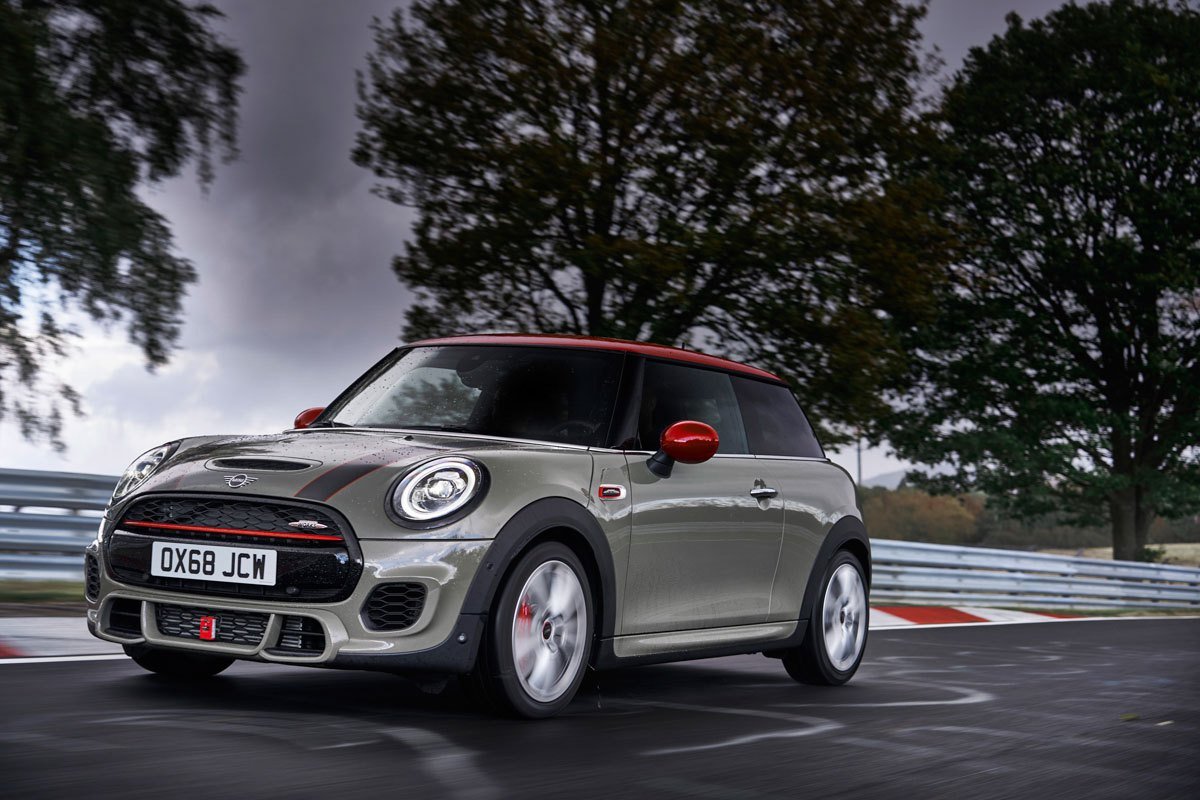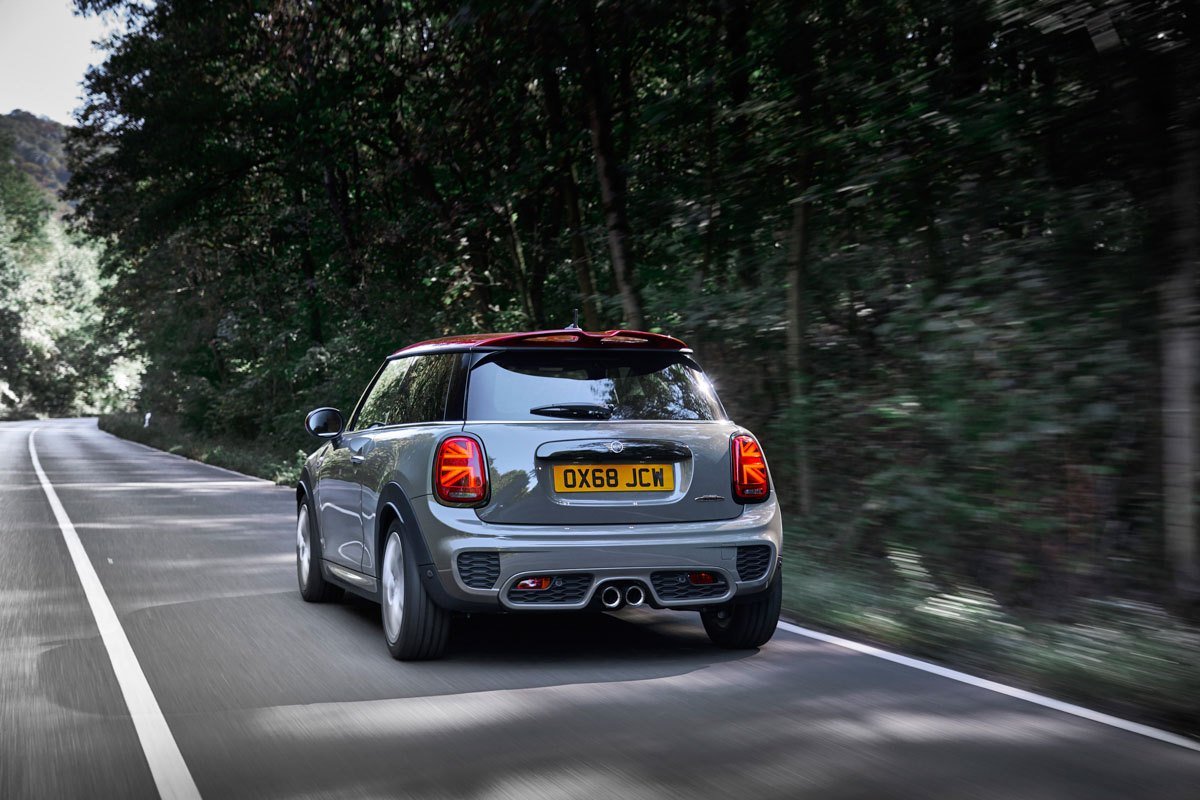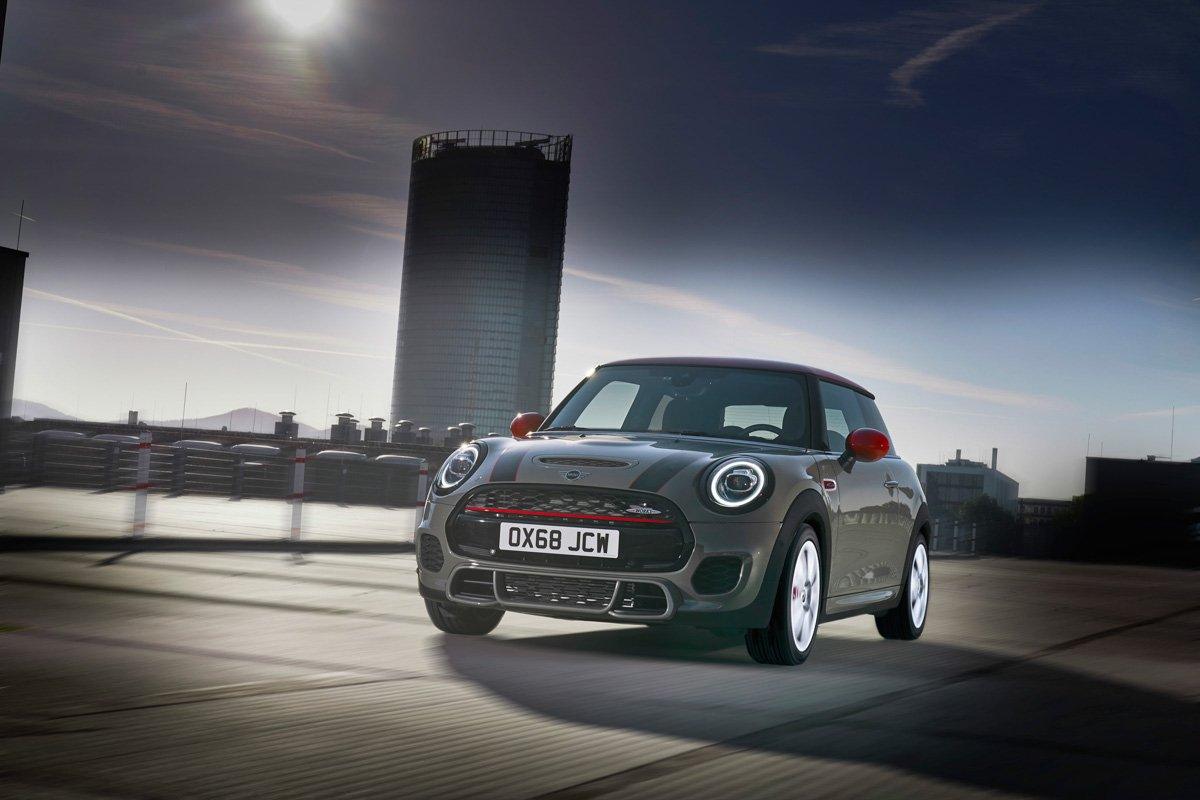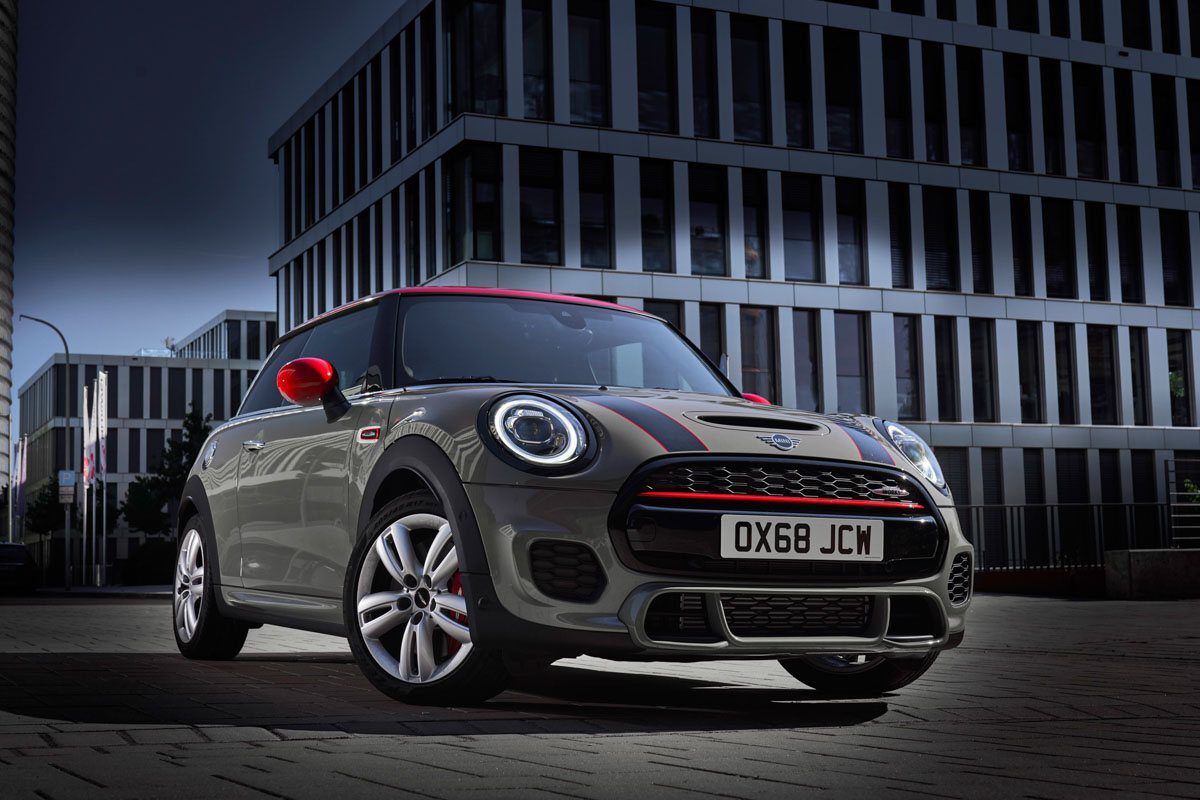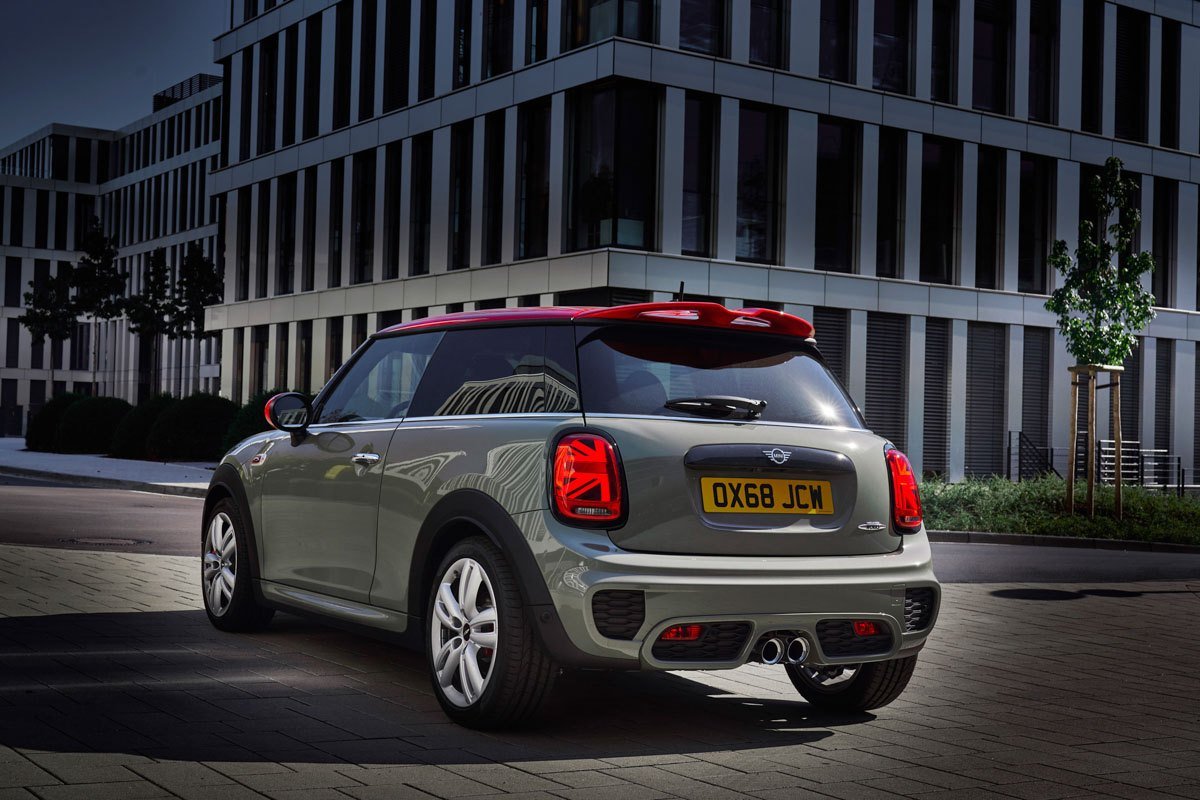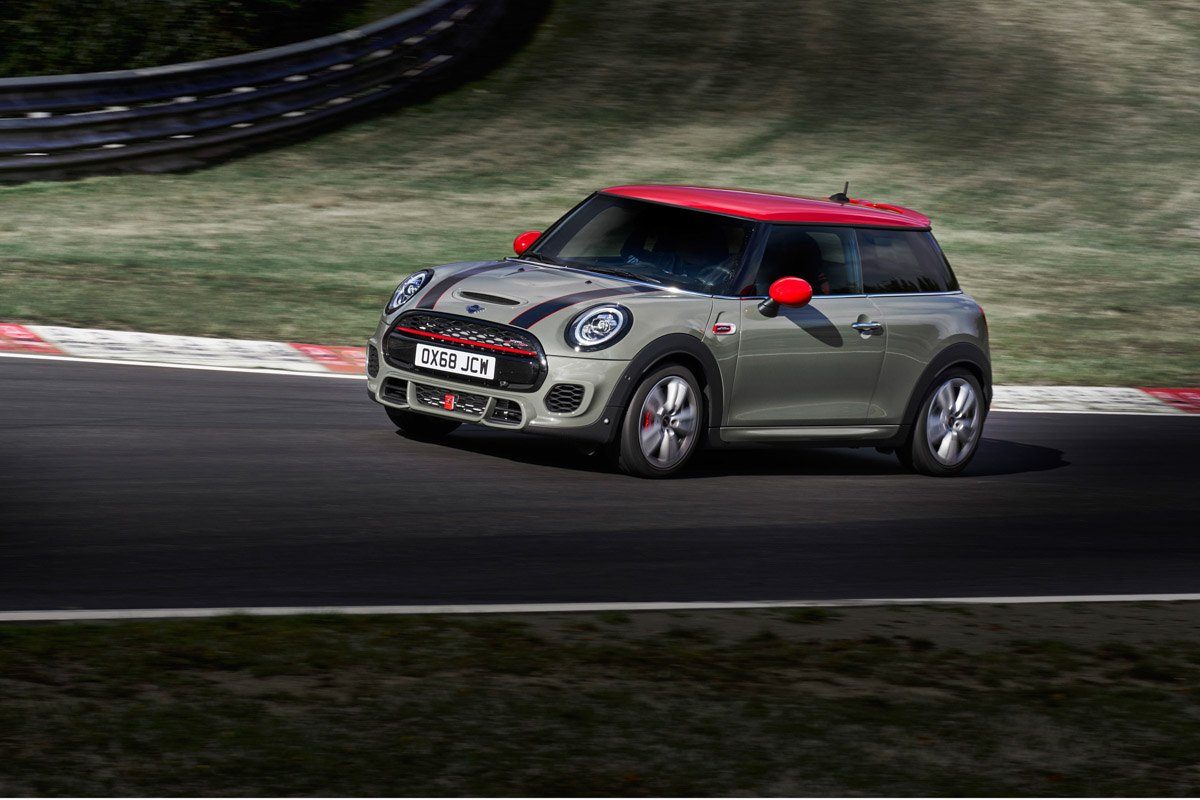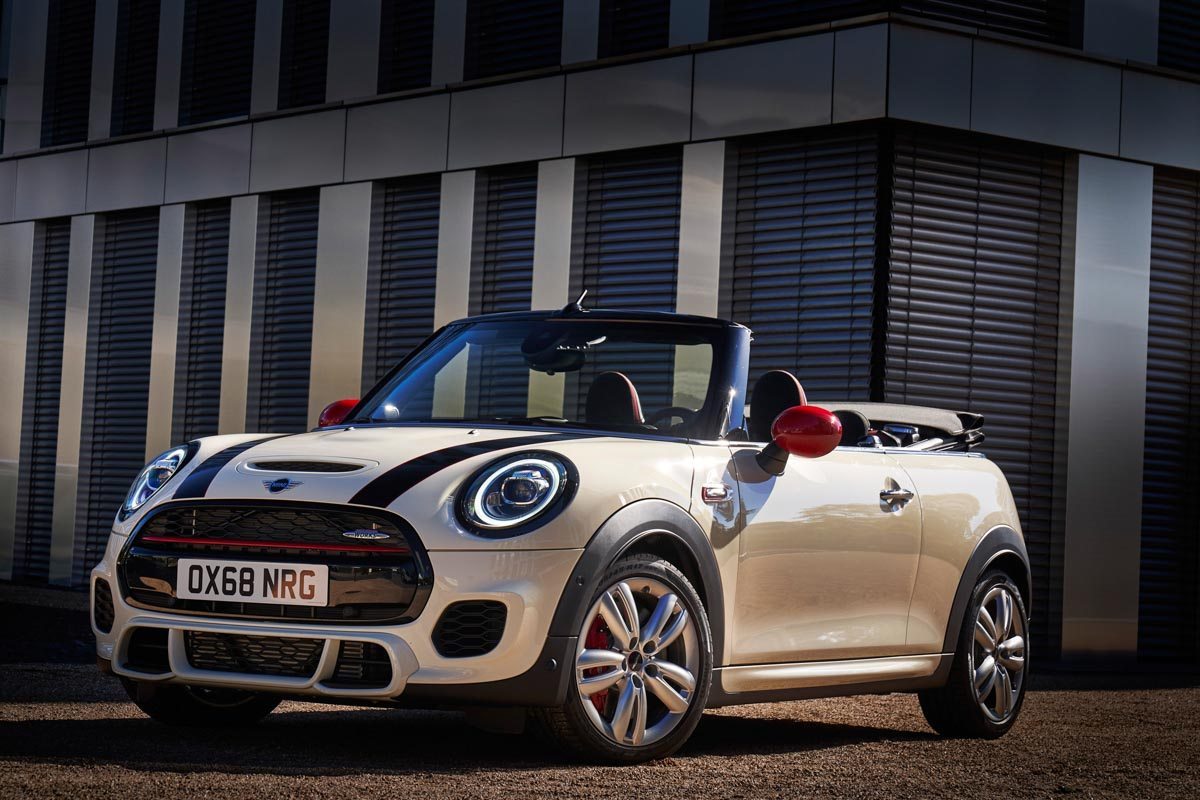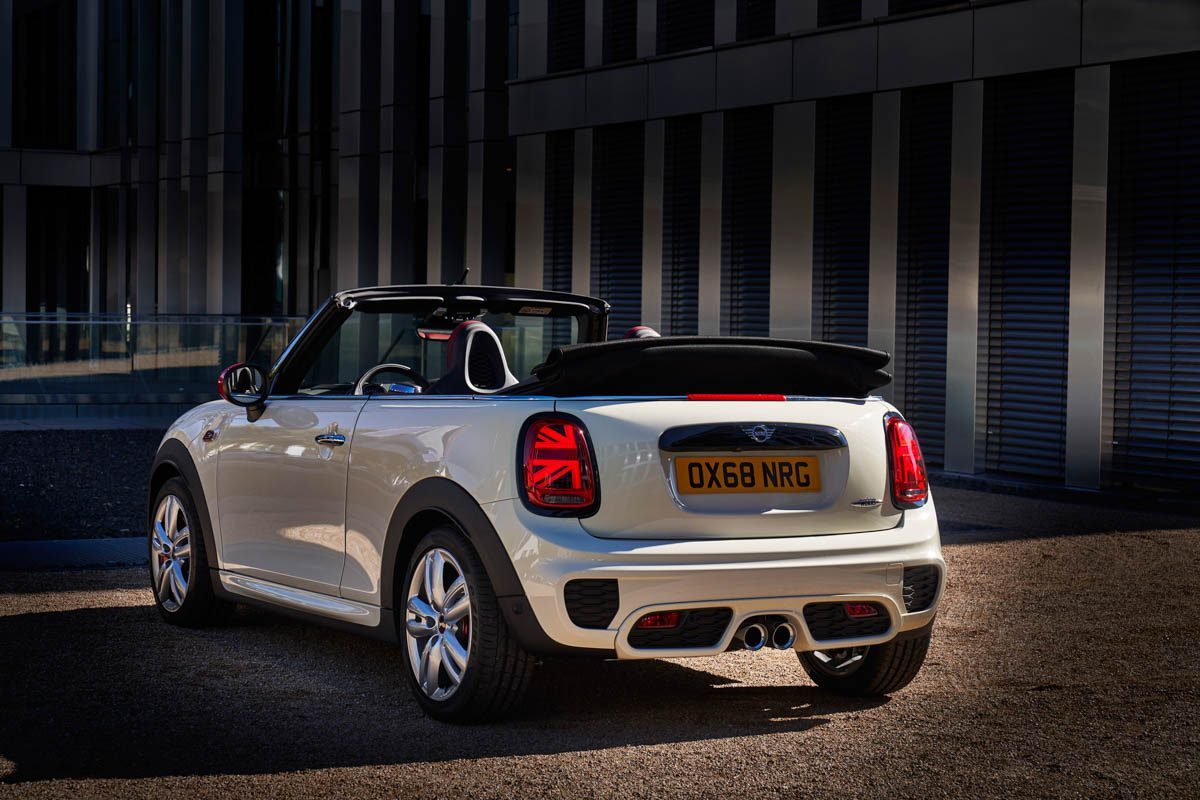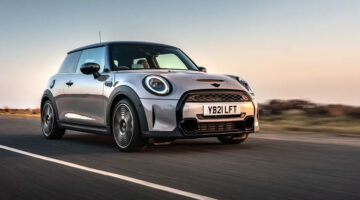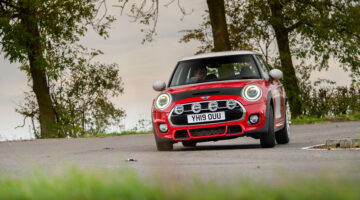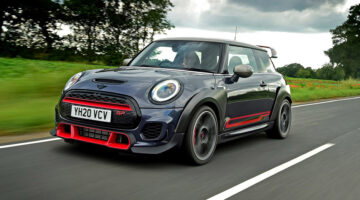The JCW is certainly fast and relatively sophisticated for a hot hatch but it’s doesn’t quite have the fun factor of its chief rival
Operating an ‘If it ain’t broke’ philosophy with the latest generation of Mini JCW, the changes for its mid-life refresh have been small, but that doesn’t mean that the hottest (for the time being) of Minis isn’t still a hoot to drive. Power and torque – at 228bhp and 236lb ft – remain unchanged, but under the skin there have been some subtle WLTP-related changes. Despite retaining the same engine, the JCW is still blisteringly quick and beats its rivals in Top Trump bragging rights.
Joining the hatch and convertible later this year will be the JCW versions of the Clubman and Countryman and these will be even quicker still, featuring a 302bhp version of the 2-litre turbocharged engine plus all-wheel drive and will be capable of sub-five second 0-100kph times. There’s also a limited edition new version of the Works GP hatch in the pipeline set to debut in 2020.
For the time being though the JCW hatch is the top dog in the Mini range and its performance goes some way to justifying its $32,330 price tag. Now equipped with more suitable Pirelli P Zero tyres, the JCW delivers an engaging drive, although with its increased girth it’s perhaps not quite as engaging as its latest rival, the Ford Fiesta ST. Even in top spec ST-3 guise the Ford easily undercuts the Mini in terms of price yet provides a more thrilling drive.
Previous generations of Mini have always been energetic, agile and adjustable. The latest model, including the JCW, feels bigger and more ponderous than before, but despite this there is still some fun to be had. The engine provides excellent straight-line grunt while the uprated JCW chassis is grippy and involving. With the optional adaptive dampers it’s even better, with a less choppy ride when not exploring its handling potential, yet a tauter drive when pushing hard.

While Mini offers a convertible take on the JCW theme there’s not really enough to recommend it. It’s heavy, rattly and the flex in the chassis seriously reduces the car’s adjustability. At a whisker under $40k it’s also unpalatably expensive.
Prices, specs and rivals
The JCW tops the mainstream Mini Cooper range by some margin, priced at $32,330. It’s just over $6000 more than a basic Mini Cooper S and $4080 more than a Cooper S Sport or Exclusive, but along with the JCW’s enhanced performance there is more standard equipment on offer. Along with the normal Mini spec you get a set of performance brakes, cruise control, variable driving modes, JCW seats and the unique JCW exterior embellishments are all standard. However, there are still plenty of extras to consider – a choice of navigation and comfort packages, plus a host of ‘Connected features’ – which can rapidly take the JCW’s price to over $40k if you’re not careful.
There’s an eight-speed automatic transmission on offer which adds $2100 to the JCW’s cost and there’s also a convertible body style available from $36,450. You’ll only find one performance upgrade on the options list – variable damper control at $750, which works well in conjunction with the car’s standard variable driving modes.

The standout rival to the Mini JCW is the Ford Fiesta ST, and while it might look (on paper) like it’d be out-gunned by the JCW, it’s a better driver’s car. It might only have a 1.5-litre three-cylinder EcoBoost, but with 197bhp it’s only a couple of tenths slower to 100kph than the Mini JCW. But with super-quick steering and an agile and engaging chassis it’s an absolute hoot to drive, and in ST-3 guise it’s packed full of just about all the gadgets you could wish for and is a significant $4360 less than the JCW.
Without an S1 in its line-up Audi doesn’t really have a viable rival to the JCW, although the snappily named A1 S Line Competition 40 TFSI S-tronic comes closest. With 197bhp it’ll complete the 0-100kph sprint in 6.5sec, but overall it’s far too grown up in feel and the way it drives to be compared to the Fiesta ST or Mini JCW. The A1 is quick and will cover ground rapidly and tidily but the fun factor’s missing.
The same can be said for the Volkswagen Polo GTI that uses essentially the same underpinnings as the A1. It is usefully cheaper than the Mini JCW but can’t dole out similar levels of fun as either the Fiesta or JCW.
Performance and 0-100kph time
The John Cooper Works hatch and convertible are both powered by the same 2-litre four-cylinder turbocharged engine that produces 228bhp and 236lb ft of torque. And until the JCW Countryman and Clubman hit the roads, that makes them the most powerful production Minis ever.
The JCW hatch goes from 0 to 100kph in 6.1sec for the eight-speed automatic and 6.3sec for the manual. That puts the JCW ahead of most of its competition; the manual JCW hatch is 0.2sec faster than the Ford Fiesta ST. Both the manual and automatic JCWs have an impressive top speed of 246kph.
The Convertible is 100kg more than the hatchback and, as such, its performance figures aren’t quite as impressive. The manual reaches 100kph from a standstill in 6.6sec, with a maximum speed of 241kph. The automatic soft-top is 0.1sec quicker to 100kph, but it has a 2kph slower top speed.

The latest JCW feels a significant step up in performance terms over the last generation. The 23 per cent rise in torque is most noticeable, although the electronic limited-slip diff can’t always distribute power across the axle effectively with the increased grunt. For the most part though, the new JCW never feels anything other than rapid.
Engine and gearbox
The engine is a 2-litre four-cylinder turbocharged unit with 228bhp and 236lb ft of torque. It’s closely related to the motor in the Cooper S, but boasts some significant internal changes in order to bring about the extra power. Lower compression pistons in the JCW’s engine means that the turbo’s boost has been increased, consequently upping the power. The turbo has also been relocated to reduce the distance the exhaust gases need to travel in an attempt to quicken response and deliver power across a wider rev range.
The engine isn’t the most characterful of units, but the tweaks do mean that it’s certainly effective. The most noticeable change is that maximum torque is delivered at 1250rpm, which means the JCW pulls hard from a near-standstill. The full 228bhp arrives later, at 5200rpm.

The JCW is available with a choice of either manual or automatic gearboxes. The six-speed manual is your best bet, as it suits the car’s character better, the short, slick throw pairing well with the JCW’s handling characteristics. The manual gearbox also features an automatic rev-match function – which oddly only comes into play when in Sport mode – and this might not be to everyone’s taste but can serve a purpose during fast driving or can be disabled by turning off the traction control entirely.
Where the pre-facelift version of the JCW used a six-speed torque-converter gearbox the latest incarnation has an eight-speed Steptronic auto and it’s quick enough both going up and down the ’box. As is the fashion now, upshifts cause the JCW to emit a little burp from its exhaust on full-bore changes. It comes as standard with shift paddles on either side of the wheel to make the auto ’box a little bit more engaging.
L/100km and running costs
Despite offering 39bhp and 29lb ft more than the Cooper S, the JCW’s fuel economy isn’t significantly affected and under the WLTP guidelines its combined economy figures range from 7.3 to 7L/100km, just 141.1 or 94 L/100km less than the S. Those figures are for the manual, with the automatic version posting nigh on identical results. These should be achievable under gentle driving, but if you use all the performance you’ll see economy down in the 20s.
The extra weight of the convertible makes it slightly less economical, with official combined economy figures of 7.5 to 7.2L/100km. Again, figures for the auto are virtually identical.
Revisions made to the JCW in early 2019 included the addition of a particulate filter integrated into the standard sports exhaust system, ensuring it meets the strict Euro 6d-TEMP emission standard. While Mini says it doesn’t affect economy or emissions, there don’t seem to be quite so many pops and bangs from the exhaust as a result.

Ride and handling
The JCW’s suspension hasn’t been dramatically changed compared to that of the Cooper S. It retains the same MacPherson strut front and multi-link rear axle. However, the springs and dampers have been retuned to help improve agility, the anti-roll bars have been replaced with hollow items to save weight and all JCWs have the option of adding adaptive dampers at a cost of $750.
Most of the frustrations we had on first acquaintance with the new Mini John Cooper Works were linked to the Pirelli Cinturato tyres. To be clear, it’s not a bad tyre as such, it just isn’t geared towards high-performance driving in the way that a Pirelli P Zero or Michelin Pilot
Super Sport is. This relatively low-grip compound made the JCW feel as though it skated across the road surface when cornering rather than digging into it. Pushed to their limit they also let out a high-pitched squeal.
The good news for the JCW is that the facelifted models come as standard with Pirelli P Zeros, which are a big improvement. There’s more purchase in the dry and it doesn’t wail annoyingly through corners, so you can lean on the chassis a little harder and trust the front axle a little more. There’s also less deflection in the tyre sidewall under hard cornering, which gives the front end much more precision and the driver more confidence.

While there’s far more grip than before, the JCW’s centre of gravity feels unusually high – especially compared to Minis of old – and the car does roll more than you might expect when cornering, yet the suspension can be pretty firm when travelling in a straight line, especially over rougher roads. You could also find yourself fighting the steering wheel as the JCW struggles to deploy all its power, with the front end sniffing out surface imperfections and tugging on the steering wheel.
The optional adaptive dampers do add an extra layer of refinement to the JCW, significantly improving the ride in everyday driving where the standard set-up could become wearisome on longer journeys. In Sport mode they’re appreciably stiffer, helping the JCW to a flatter, more neutral cornering stance. Overall the JCW feels less wayward with the adaptive dampers and it would seem like $750 well spent from the options list.
The manual gearbox, meanwhile, adds the missing layer of interaction that blights the automatic-equipped JCW. Shifting up through the gears and working your way back down the ’box under braking is such an innate part of the small hot hatch experience – a manual shift makes the quickest Mini a much more enjoyable, engaging car. The shift quality is good, too, with a tightly defined gate.
Braking is taken care of by a set of 330mm discs on the front axle, clamped by four-piston Brembo calipers that are so big they almost brush the inside of the wheels. They aren’t just for looks, though. They provide strong, effective braking even on track.
The JCW Convertible has a lot of the same hardware as the hatch – brakes, engine, suspension – and, at medium speeds at least, behaves in much the same way. It turns in with the same verve but the lack of roof, and the loss of rigidity that comes with that, means there’s a constant and unpleasant shuddering from the body on local roads. The extra slack in the body also detracts from the JCW’s mid-corner adjustability, as it doesn’t react to a lift of the throttle in the same immediate manner.
Interior and tech
Though it’s based on the Cooper S, the JCW’s cabin receives a few bespoke features. Bucket-style seats come trimmed in part-Carbon Black Dinamica fabric (similar to Alcantara) and part-leather, with full leather a $600 option. The multi-function steering wheel and door sills also wear JCW logos. A set of stainless steel pedals complete the sporty tone.
A nice feature is the fitment of an anthracite headliner, which matches the piano-black trim and complements the contrasting red stitching. Like the rest of the Mini range, a large circular feature in the centre of the dash dominates the interior, supposedly still aping the original Mini’s central speedometer. It can cause the interior to look fussy, as some of the buttons are contained within the circle, yet others are littered elsewhere.
Now that the central display no longer has the speedometer function it looks a little contrived, with the oblong display screen within it looking rather out of place. This central display also has an illuminated surround and depending on which driving mode you’re in, the surround can light up in a variety of ways – when the car is set to Sport mode, for example, it illustrates revs.

The JCW comes with plenty of standard kit, including LED headlights, DAB digital radio, air con, heated mirrors, Bluetooth connectivity, cruise control, a speed limiter and an auto-brake function for hill starts.
Popular optional features include a 12-speaker sound system, a panoramic sunroof, heated seats and a head-up display (HUD) that can display information in the driver’s line of sight. While the HUD might not look like bad value for money at $600, it can only be ordered in combination with one of the navigation systems which are $1100 for the basic version and an eye-watering $2500 for the Connected Navigation package.
Design
When the new Mini arrived in 2014, it was criticised for its bulbous exterior and chubby curves. However, the JCW’s bodykit makes the car look far more purposeful. For a start, 17-inch JCW wheels help to balance the proportions, while large air intakes and new grilles set a much sportier tone.
In case the JCW’s more aggressively styled bumpers, diffuser and roof spoiler weren’t enough of a giveaway, a raft of JCW badges helps to set the car apart from the rest of the Mini range.
Thirteen paint colours are available – all of them bar flat white are a $655 option, apart from Rebel Green (exclusive to the JCW) and Enigmatic Black, which cost $935. Buyers can also spec their mirrors and roof painted in Chili Red, white or black at no extra cost, but if you want bonnet stripes you’ll need to spend an additional $180.
This article originally appeared at evo.co.uk
Copyright © evo UK, Dennis Publishing

